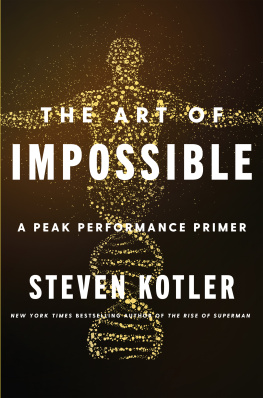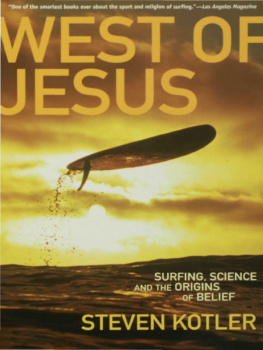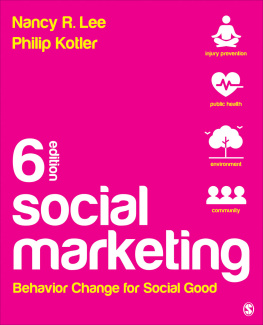Steven Kotler - The Art of Impossible
Here you can read online Steven Kotler - The Art of Impossible full text of the book (entire story) in english for free. Download pdf and epub, get meaning, cover and reviews about this ebook. year: 2020, publisher: Harper Wave, genre: Romance novel. Description of the work, (preface) as well as reviews are available. Best literature library LitArk.com created for fans of good reading and offers a wide selection of genres:
Romance novel
Science fiction
Adventure
Detective
Science
History
Home and family
Prose
Art
Politics
Computer
Non-fiction
Religion
Business
Children
Humor
Choose a favorite category and find really read worthwhile books. Enjoy immersion in the world of imagination, feel the emotions of the characters or learn something new for yourself, make an fascinating discovery.
- Book:The Art of Impossible
- Author:
- Publisher:Harper Wave
- Genre:
- Year:2020
- Rating:3 / 5
- Favourites:Add to favourites
- Your mark:
- 60
- 1
- 2
- 3
- 4
- 5
The Art of Impossible: summary, description and annotation
We offer to read an annotation, description, summary or preface (depends on what the author of the book "The Art of Impossible" wrote himself). If you haven't found the necessary information about the book — write in the comments, we will try to find it.
The Art of Impossible — read online for free the complete book (whole text) full work
Below is the text of the book, divided by pages. System saving the place of the last page read, allows you to conveniently read the book "The Art of Impossible" online for free, without having to search again every time where you left off. Put a bookmark, and you can go to the page where you finished reading at any time.
Font size:
Interval:
Bookmark:
For my mother and father
Ever since you were a little kid, you always have a dream about what you can accomplish. As soon as you get close to that dream, theres another. Theres always a desire to keep learning, to keep evolving. Heres the line. Lets tickle it a bit. And then you figure out thats not actually the line. The impossible is actually a little farther out, so lets go over there and tickle it again. You do this for long enough, and you just get used to it.
MILES DAISHER
EXTREME INNOVATION
This is a book about what it takes to do the impossible. In a very real sense, its a practical playbook for impractical people. Its designed specifically for those of us with completely irrational standards for our own performance and totally unreasonable expectations for our lives.
Definitions are helpful.
Impossible, as Im using the word here, is a kind of extreme innovation. Those who tackle the impossible are not just innovating in matter but also in mind. As a category, impossible is all the stuff that has never been done before and, most believe, will never be done. These are the feats that exceed both our capabilities and our imagination. They lie beyond our wildest dreams in the most literal sense. Paradigm-shifting breakthroughs. Four-minute miles. Moonshots. Call this category capital I Impossible.
But theres also a lowercase i impossible. The same rules apply, as this is still the stuff beyond our capabilities and our imagination, just on a different scale. Lowercase i impossibles are those things that we believe are impossible for us. Theyre the feats that no one, including ourselves, at least for a while, ever imagined wed be capable of accomplishing.
Growing up in Cleveland, Ohio, my desire to become a writer was a lowercase i impossible. Other than putting pen to paper on a daily basis, I had no clue how to proceed. I didnt know any writers. I didnt know anyone who even wanted to be a writer. There was no discernible path from A to B. No internet, few books, no one to ask. It was my own private impossible.
Along these lines, figuring out how to get paid to do what you love is another lowercase i impossible. As is rising out of poverty; overcoming deep trauma; becoming a successful entrepreneur, CEO, artist, musician, comedian, or athlete, or generally world-class at what you do. Whats the common thread among these accomplishments? There is no clear path between points and, statistically, very poor odds of success.
Yet, theres no secret secret. After decades spent researching this subject and training people to overcome those odds, Ive repeatedly learned the same lesson: if you devote your life to accomplishing lowercase i impossibles, you can sometimes end up accomplishing a capital I impossible along the way.
So while this is a book based on lessons learned from people who have accomplished capital I Impossible, its meant to be used by anyone interested in accomplishing lowercase i impossibles. That said, lowercase i impossible is probably not for everyone.
Theres a substantial difference between personal improvement and stalking the impossible. The latter can be significantly more dangerous and a lot less fun. As far as I can tell, the only thing more difficult than the emotional toil of pursuing true excellence is the emotional toil of not pursuing true excellence. And, to be clear, this isnt a book about happy or sad. There are plenty of other books that cover those topics but, for our purposes, happy or sad is just what happens on the way to accomplishing the impossible or not accomplishing the impossible. More meaningful does not typically mean more pleasant.
I learned this the hard way.
I came to the question of what it takes to do the impossible through the door of journalism. I became a journalist in the early 1990s. At the time, action and adventure sportsskiing, surfing, snowboarding, skydiving, rock climbing, and the likewere just beginning to capture the publics eye. The X Games were getting under way, the Gravity Games as well. And the national media was becoming interested in this story.
But, back then, there werent that many journalists who knew much about these sports. This meant, if you could write and surf, or write and ski, or write and rock climb, there was work. For certain, I couldnt do any of those things very well, but I was drawn to these sports and desperate for work. So I lied to my editors and was lucky enough to spend the better portion of the next ten years chasing professional athletes around mountains and across oceans.
As it happens, if youre not a professional athlete, and you spend all your time chasing professional athletes around mountains and across oceans, youre going to break things. I broke a lot of things. Two shattered thumbs, two broken collarbones, three torn rotator cuffs, four broken ribs, both of my arms, my wrist into six pieces, each of my patellas, sixty-five fractures in my legs, my tailbone, my ego.
As I said, chasing the impossible has a cost.
But what did all of this brokenness add up to in the real world? Time off. What would happen: Id be hanging out, snap this or that, then be forced onto the couch for a few months. But when I returned, the progress I saw was eye-popping. It was amazing. And it didnt make any sense.
Feats that were, three months earlier, considered absolutely impossiblenever been done, never gonna be donewere not just being done, they were being iterated upon. It was brain-scrambling, explains snowboarding legend Jeremy Jones. Things that were impossible in the morning were possible by the evening. Literally. Rules that were adhered to vehemently, rules that had been in place since the beginning of [action] sports, rules like dont do this because youll die, were changing on a daily, sometimes hourly, basis.
Surfing, for example, is an ancient activity, dating back over a thousand years. During most of that time, progress was exceptionally slow. In the millennium between the fourth century AD, when the sport was first invented, and 1996, the biggest wave anyone had ever surfed was twenty-five feet.
At the start of this book, when I described the impossible as a form of extreme innovation, this is exactly what I meant. And when I saw this much extreme innovation pouring out of surfing and nearly every other action sport, this definitely caught my attentionbut not just for the obvious reasons.
Sure, these athletes were routinely accomplishing the impossible and, absolutely, this demanded an explanation. But, more important: it was these athletes.
In the early 1990s, action and adventure sports athletes were an exceptionally rowdy bunch without many natural advantages. Almost all of the people I knew came from extremely difficult backgrounds. A great many came from broken homes. They had rough childhoods. They had very little education. They had almost no money. Yet, here they were, on a stunningly regular basis, stampeding their way through the impossible and, in the process, redefining the limits of our species.
Journalism, one of my old editors liked to say, is the greatest job in the world because you occasionally find yourself in bed with historyand it gets pretty weird up close.
This was one of those times.
It is nearly impossible to describe what it felt like to be hanging out with your friendsyou know, the ones you went out with last night, the ones who did eleven shots of tequila, smoked an ounce of weed, dropped acid, built a giant ski jump against the side of an old school bus parked in the back of the ski area parking lot, poured large quantities of gasoline over the bus, lit that sucker on fire, clicked into their skis, used somebodys old Chevy pickup to tow each other across that icy parking lot and into the jump at speeds above fifty miles per hour in an effort to win the five dollars that someone put up for the person who could throw the best naked backflip over the infernobecause, you know, making rents not easy in a ski town.
Font size:
Interval:
Bookmark:
Similar books «The Art of Impossible»
Look at similar books to The Art of Impossible. We have selected literature similar in name and meaning in the hope of providing readers with more options to find new, interesting, not yet read works.
Discussion, reviews of the book The Art of Impossible and just readers' own opinions. Leave your comments, write what you think about the work, its meaning or the main characters. Specify what exactly you liked and what you didn't like, and why you think so.










